Check the system, especially the fine nozzles etc., regularly.
Hygiene: Hygiene is very essential in your greenhouse. Clean all parts of your greenhouse with a disinfectant once a year.
Check all plants for pests and any disease symptoms
regularly.
You might use any of several suggested pest control choices
available across different chemical suppliers but keep in touch
with the latest regulations on user safety and also with-
holding periods for any chemical you apply to edible plants.
Copyright © 2007 eBookwholesaler All Rights Reserved 30 -
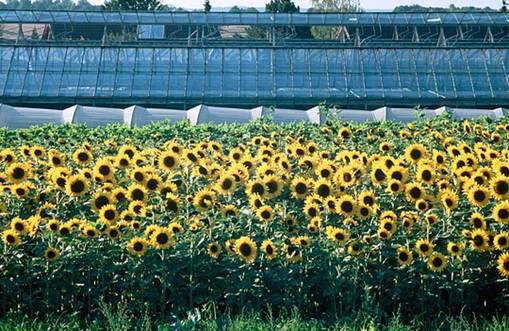
"Building Your Own Greenhouse" by Max Clarke
Page 31 of 123
Ten Steps to Building a Greenhouse
Building a greenhouse does not have to cost a fortune.
Planning to minimize your set-up and recurring costs will be
well worthwhile.
Your greenhouse could provide a superb environment with
sufficient and appropriate sunlight for your plants. Early
morning and late evening sunlight is the best. You should
provide shade from the afternoon sun for your plants.
Building a greenhouse
A southeast location should be considered. The east-side
location could receive maximum sunshine from November to
March and this can help plants start with their food production
earlier than usual.
Copyright © 2007 eBookwholesaler All Rights Reserved 31 -
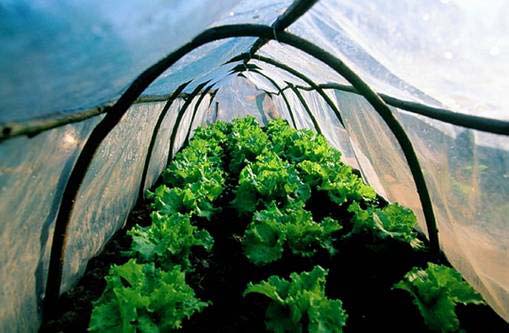
"Building Your Own Greenhouse" by Max Clarke
Page 32 of 123
Greenhouse planning also depends on the type and variety of
plants you want to grow. Site selection for your greenhouse
should include planning to have sufficient drainage to
accommodate the heaviest type of rain to be expected in your
location. If there is insufficient drainage around your
greenhouse, think about placing it on a higher level so that
excessive water can drain away more easily.
Lettuces in a greenhouse
Your greenhouse should also have sufficient space to keep all
accessories and for you or your staff to do your potting and
other gardening work safely and without stress.
Materials for Building Your Greenhouse:
1) Fifteen 5/8" x 6' lengths
Copyright © 2007 eBookwholesaler All Rights Reserved 32 -
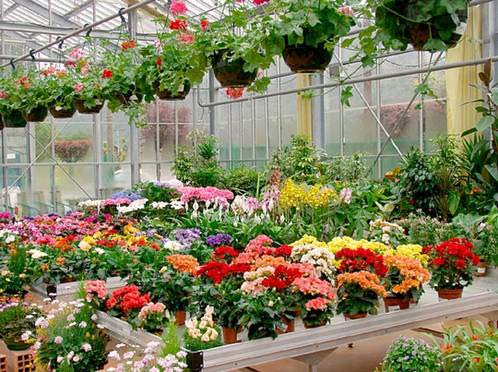
"Building Your Own Greenhouse" by Max Clarke
Page 33 of 123
2) Four foot lengths of schedule 40 PVC
3) Seven twenty foot pieces of schedule 40 PVC with a size
3/16 drilled hole at ten feet
4) Eighty pieces of 2 x 4 wood
5) Sixty 2” fence staples
6) Four eight-foot long fence posts
7) UV polyethylene 40” x 24 feet
Creating a beautiful greenhouse
Steps for Building Your Greenhouse
1) Erect the six feet pieces within a distance of four feet in marked area. Allow protrusion of 48” from the ground.
Copyright © 2007 eBookwholesaler All Rights Reserved 33 -
"Building Your Own Greenhouse" by Max Clarke
Page 34 of 123
2) Use the fence staples to nail a 2 x 6 runner on rebar
stakes.
3) Put twenty-foot rebar stakes on PVC pipes. You may
need another person to hold one end while you do the
other end. All drilled holes should be on a line parallel to
the ground.
4) Slide PVC pipes over rebar stakes, making sure there
are no sharp ends or rough pipes.
5) Carefully slide wire through all PVC holes and along the eight PVC pipes forming the roof.
6) You also have to wire together the four-foot PVC pipe
lengths with copper or baling wire. Wrapped wire can
force PVC pipe inward.
7) Use vertical 4x4 foot posts to construct end walls. Check that your end walls are vertically straight.
8) The door should be tight to prevent wind from entering
the greenhouse possibly causing problems.
9) Fix nails on the horizontal posts and push them into the ground.
10)
With help from others, slide the plastic over the
cage and secure the ends by nailing it.
Your greenhouse is ready for setting up the internal climate.
Then, you can add any of your own innovations.
Copyright © 2007 eBookwholesaler All Rights Reserved 34 -
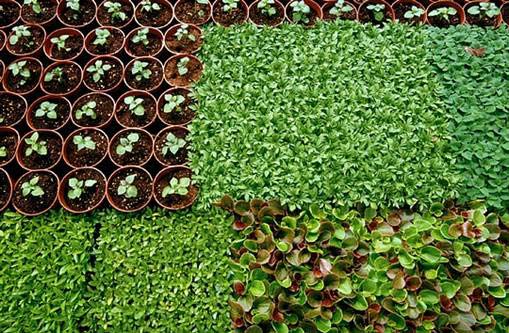
"Building Your Own Greenhouse" by Max Clarke
Page 35 of 123
Do You Need a Customized Greenhouse?
A customized greenhouse is specific to your needs and
specifications. Many people do not like ready-made
greenhouses, as they do not fit into their ideas and choices.
There are other factors that play a role in having a customized
greenhouse. If the available site for your greenhouse is not
even, you need to get a specially adapted greenhouse to fit
the site.
Flowerpots in a greenhouse
Some could need a greenhouse that can be expanded
regularly to accommodate more plants. Of course, if you are
focused on commercial growing, prefabricated greenhouses
would probably be a poor choice.
Copyright © 2007 eBookwholesaler All Rights Reserved 35 -
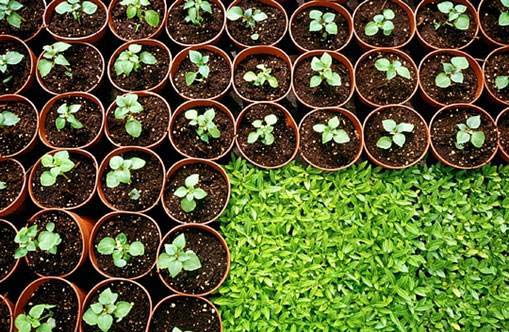
"Building Your Own Greenhouse" by Max Clarke
Page 36 of 123
Building Your Own Greenhouse
Building your own greenhouse has its advantages. You can
accommodate your preferences of size, shape and fitting out.
You can design the placements of your plants for convenience
and good work-flow.
More flowerpots in a greenhouse
The first consideration is the size of your greenhouse. More
space means that you should be able to arrange all plants as
you want them but it will increase the setting-up and ongoing
maintenance costs.
Your greenhouse should be able to cope with the temperatures
in your area. If you live in a hot, tropical climate, the
greenhouse could require good cooling facilities and you need
Copyright © 2007 eBookwholesaler All Rights Reserved 36 -
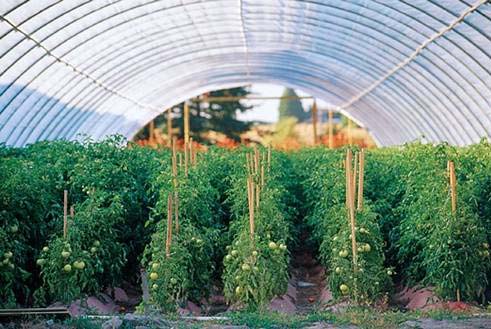
"Building Your Own Greenhouse" by Max Clarke
Page 37 of 123
adequate heating systems to keep your plants warm
throughout the cold winter months if you live in a cold climate.
Growing tomatoes in a commercial greenhouse
Maintaining necessary heat and warmth requires adequate
electricity. Check into available electrical voltage, cost per
KWH. Also, look into other options for producing the necessary
warmth, like LP Gas, Natural Gas, Wood, and any other
options that are available economically in your area.
Next, check water quality in the area before starting your
customized greenhouse.
The next step is to make an approximate sketch of your
proposed greenhouse with all imaginable details. Also sketch a
little of the exterior like roads, buildings, gas lines, trees,
electrical poles, hills etc.
Copyright © 2007 eBookwholesaler All Rights Reserved 37 -
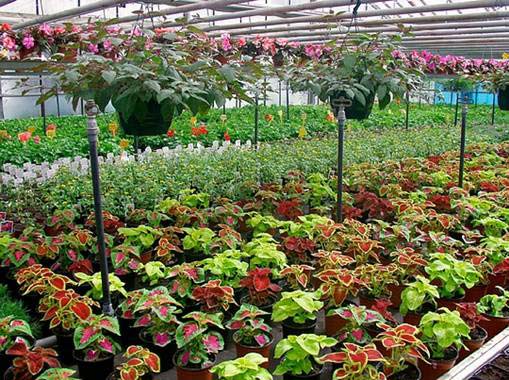
"Building Your Own Greenhouse" by Max Clarke
Page 38 of 123
The important part of building your customized greenhouse is
to decide first on the type of crop you plan to grow. You can
also try growing multiple crops and vegetables.
Greenhouse with Garden Balsam
Further customization of your greenhouse to your preferred
style might include vented or ground-to-ground enhancements
or changing the type of covering for your greenhouse to
polycarbonate, double poly, or something else.
Building as big a greenhouse as your goals and resources
permit may be the best option. You will inevitably accumulate
more plants and the list of varieties could also start growing.
The extra space within your greenhouse that you might have
Copyright © 2007 eBookwholesaler All Rights Reserved 38 -
"Building Your Own Greenhouse" by Max Clarke
Page 39 of 123
been unsure that you would need when you started could help
accommodate your growing brood.
Copyright © 2007 eBookwholesaler All Rights Reserved 39 -
"Building Your Own Greenhouse" by Max Clarke
Page 40 of 123
Important Factors
1] Ventilation is a key factor for maintaining your
greenhouse and the health of the plants which it protects.
Sufficient ventilation will help to keep your greenhouse free of
pests and diseases that could harm your plants extensively.
2] Educate yourself about proper disinfecting plans to maintain proper hygiene within your greenhouse.
3] Covering of your greenhouse should, ideally, be glass.
Although it is the best, it is also the most expensive. Plastic
sheets may be used but do not last long. A cheaper alternative
to glass is fiberglass or similar rigid plastics. You can fix the
fiberglass on a straight or curved surface of your greenhouse.
Some fiberglass is UV resistant too.
4] Flooring of your greenhouse could be concrete or even
bare ground. You can make a gravel walkway or think of other
innovative techniques to make the floor of your greenhouse
both serviceable and easy on the eye.
Copyright © 2007 eBookwholesaler All Rights Reserved 40 -
"Building Your Own Greenhouse" by Max Clarke
Page 41 of 123
Planning a Greenhouse Business
A Greenhouse business is similar to any other type of
business and requires a similar amount of commitment, risk-
taking ability and capital.
You need to gather:
1) Finance
2) Experienced staff, full or part-time
3) Materials for constructing your greenhouse
4) Plants
5) Pest control products, and ….
6) Reliable and economical sources of the above
You need to devote sufficient time and effort in caring for your
greenhouse. It’s pretty much a 365 days of the year and all
seven days of the week business too.
Essentially, planning and running your greenhouse business
will demand extensive passion and a strong desire to excel.
Copyright © 2007 eBookwholesaler All Rights Reserved 41 -
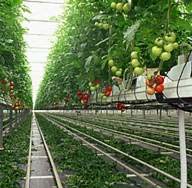
"Building Your Own Greenhouse" by Max Clarke
Page 42 of 123
Tomatoes growing In a greenhouse
Copyright © 2007 eBookwholesaler All Rights Reserved 42 -
"Building Your Own Greenhouse" by Max Clarke
Page 43 of 123
Essential Steps in Planning
Your Greenhouse Business
Goal Identification: Starting a greenhouse business could be due to your interest in gardening, but it is impossible to
prosper in business if you do not have a sure and secure
profit-making objective. You must analyze costs very closely.
Also, gain as much knowledge through discussions with others
that are more experienced in the greenhouse industry to find:
The best sources of products, supplies and finance
The most suitable varieties of each type of plant you grow or
sell;
Suitable gross profit margins to help through the lean times.
Those who may help by joining you to save on advertising,
bulk ordering and trading products with you when one of you
has orders which they cannot fill from stock.
Copyright © 2007 eBookwholesaler All Rights Reserved 43 -
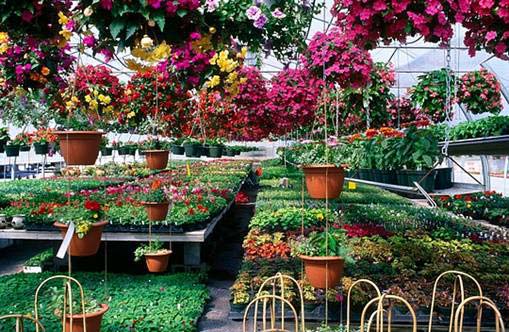
"Building Your Own Greenhouse" by Max Clarke
Page 44 of 123
Boxed and suspended flowers in a commercial greenhouse
Market Study: This forms the core of any business. Study
market demand for crops you intend growing. Study your
competitors and identify opportunities which they are not
exploiting. Of course, there may be good, but not obvious
reasons why they do not offer certain varieties which you are
asked for – they may avoid refunds and complaints by not
selling a particular plant because they know it may need
special care that their customers are not able or willing to
give.
Writing a Business Plan: Draft your greenhouse business
plan to carefully review all facets of your business. Don’t try to do this in just one session. You will think of some things once
you’ve stocked your sub-conscious with the facts you’ve
gathered and you will need to review all your assumptions
Copyright © 2007 eBookwholesaler All Rights Reserved 44 -
"Building Your Own Greenhouse" by Max Clarke
Page 45 of 123
when you have discussed your goals with professional advisers
and people that are experienced in the industry.
Site Selection: The minimum area necessary for your
greenhouse is probably at least two acres. If you are planning
a commercial greenhouse, you will need as wide as possible
an expanse of free land.
Carefully check accessibility to the site of your proposed
greenhouse both legally and by carefully checking the whole
area. Check with local government about any proposed
changes or new developments already seeking approval.
Also, look for the best available sources of water, heat,
electricity, labor and ventilation.
Look into environmental feasibility for protection against snow,
hailstorms, rainfall, drainage, strong winds, and how you can
legally dispose of waste materials.
Keep sufficient open space for further expansion in the future.
You should also look into the cost of land for your greenhouse
so that it does not cause a huge debt on your business.
Copyright © 2007 eBookwholesaler All Rights Reserved 45 -
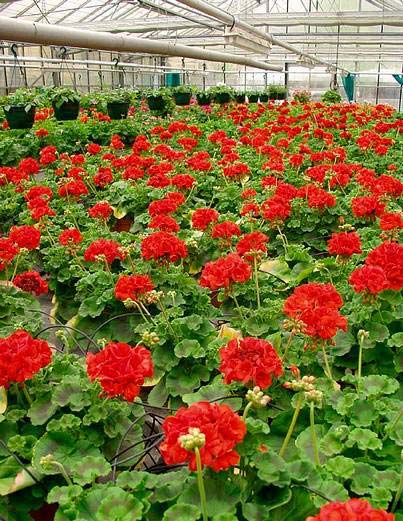
"Building Your Own Greenhouse" by Max Clarke
Page 46 of 123
Greenhouse with Geraniums
Copyright © 2007 eBookwholesaler All Rights Reserved 46 -
"Building Your Own Greenhouse" by Max Clarke
Page 47 of 123
Which Type of Greenhouse?
A freestanding greenhouse often proves to be the best choice
if you plan a greenhouse of less than 10,000 square feet.
This type of greenhouse is one of the easiest types to build
and maintain as it has its own cooling and heating systems.
This is a big factor in non-level sites and areas of heavy
snowfall or rain. Maintenance is easier and cost-effective with
better possibilities for expansion.
A gutter-connected greenhouse is suitable if you have a
cultivatable area of more than 20,000 square feet. This type of
greenhouse usually requires fairly easy installation of the
necessary utilities like centralized heat, increased labor
efficiency, and better possibilities to adapt to the available
environment.
Greenhouse Accessories
Have proper covering for the ground inside the greenhouse,
whether gravel, heavy plastic, concrete or woven cloth. Bare
ground encourages and houses pests and diseases.
Use proper benching for plants with movable aisles at the
proper heights.
Have sufficient storage space within your greenhouse for
storing plants, mixing, transplanting, keeping tools and pots.
Also, look into other administrative requirements like the local
fire code requirements, building codes etc.
Copyright © 2007 eBookwholesaler All Rights Reserved 47 -
"Building Your Own Greenhouse" by Max Clarke
Page 48 of 123
Checking the compliance costs in these areas is an essential
part of your planning for a profitable greenhouse business.
Copyright © 2007 eBookwholesaler All Rights Reserved 48 -
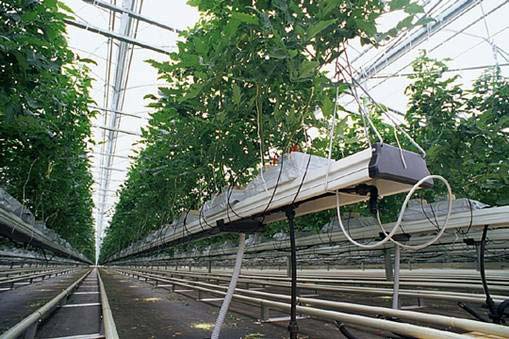
"Building Your Own Greenhouse" by Max Clarke
Page 49 of 123
Top Greenhouse Kits
Greenhouse kits help you set up your greenhouse in less time
and usually require less labor than a set-up from raw
materials.
Popular greenhouse kits include:
Weatherguard Greenhouse 6Hx6W: You can purchase
either the 6.5' H x 6' W x 8' L model or a 12' L model. This
greenhouse kit comes with a galvanized steel frame and
three-layer polyethylene film on the sides. Side vents provide
ventilation while the doors and roof have UV-protection. There
is no need of any foundation and you can hang plants from the
frame. This costs around $217 at time of writing.
Copyright © 2007 eBookwholesaler All Rights Reserved 49 -
"Building Your Own Greenhouse" by Max Clarke
Page 50 of 123
King Canopy 10 x 10 Greenhouse: This greenhouse is
currently available as 10.26'L x 9.30'W x 8'H. It is
recommended for areas that do not have any snowfall; the
galvanized steel frame, with polyethylene or plastic sides, may
not provide sufficient insulation. However, easy installation of
the kit makes it very popular. Ventilation is by unzipping rear
and front panels. Brackets and shelves are available
separately. There is no need for a foundation. It costs around
$199 to $419.
Rion PolyGreenhouse: This greenhouse has 6-mil
polyethylene sheeting rated for 93% light penetration for
three years. The heavy gauge frame of extruded aluminum is
weather resistant. It is easy to assemble this greenhouse with
an easy lock system. This maintains perfect humidity and
temperature levels. Insulation is better through the door and
extraction vents than some others. This greenhouse measures
6x8 or 6x10 and costs around $599.
Flowerhouse FHCV900 Conservatory Greenhouse: This
plastic round-shaped greenhouse, with a height of 10' and
diameter of 9' has a three-year warranty. A galvanized steel
frame with polyethylene sides offers complete protection.
Additionally, a zippered front door and screened side windows
allow easy ventilation. The kit is available with tie-downs, ground stakes and shade cover too. There is easy access for
power and water. It does not require any foundation and is
available in 10' H x 9' W x 9' D size, costing $349.
Copyright © 2007 eBookwholesaler All Rights Reserved 50 -
"Building Your Own Greenhouse" by Max Clarke
Page 51 of 123
Gardman Complete Walk-In Greenhouse: This free-
standing greenhouse has an aluminum frame with galvanized
steel coating, roof venting and twin-wall polycarbonate siding.
It is available in three sizes; 4x6, 6x6, and 6x8 and costs
range from $559.99 to $719.99.
All prices and features may change at any time. Ratings are
the writer’s personal views and not guaranteed in any way.
Copyright © 2007 eBookwholesaler All Rights Reserved 51 -
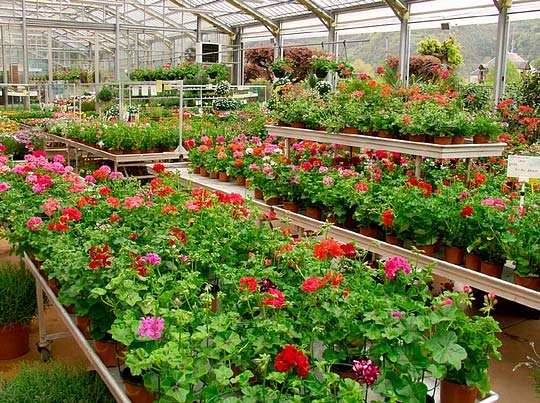
"Building Your Own Greenhouse" by Max Clarke
Page 52 of 123
Part-III: Basics of Greenhouse Construction
Planning Your Greenhouse Location
Location plays an important role in the maintenance and
upkeep of your greenhouse. Ideally, you should plan carefully
the whole area for locating your greenhouse. This helps in
planning and deciding on other essentials of a greenhouse
business.
Planning Your Greenhouse Location
Direction of Greenhouse: If you plan for an attached or
lean-to greenhouse, it should be on the south side of the
building, preferably on the southeast. This direction helps your
Copyright © 2007 eBookwholesaler All Rights Reserved 52 -
"Building Your Own Greenhouse" by Max Clarke
Page 53 of 123
greenhouse to receive the cool early morning sunlight. It can
start food production early and does not endure as much of
the stronger afternoon sunlight. There is less of a problem of
overheating, too.
Never place your greenhouse in the north. That direction can
suit only those plants that require very little or no light at all.
If you choose a freestanding greenhouse, place it to the north
of deciduous trees like oaks and maple. These trees provide
the required shade during summer afternoons. In winter, they
shed their leaves and the bare trees allow easy penetration of
winter sun all day.
Do not place your greenhouse near shady evergreen trees.
These could be useful in summer but will reduce the sunlight
available in the winter months.
If there is a need, you can use “grow lights” to supplement
available sunlight.
Slope: Although flat and level land is the best for your
greenhouse, south or a south-east facing slope can prove
advantageous too. You can dig around to form a suitable slope
but this will increase your initial costs and set-up time too.
Orientation: Orientation of your greenhouse does not always depend only on the direction. It is also affected















